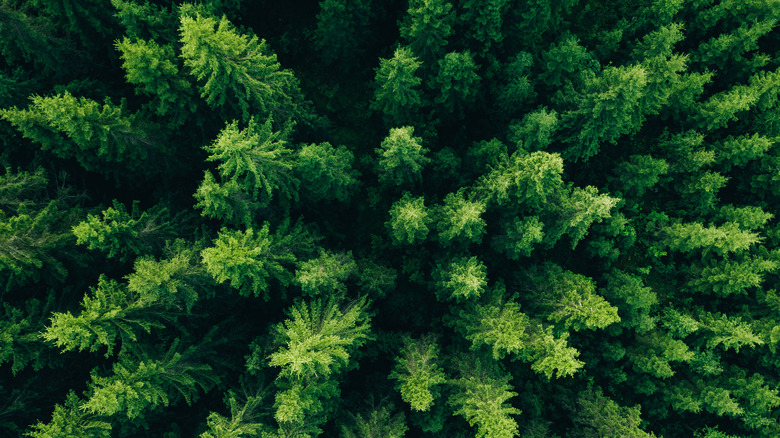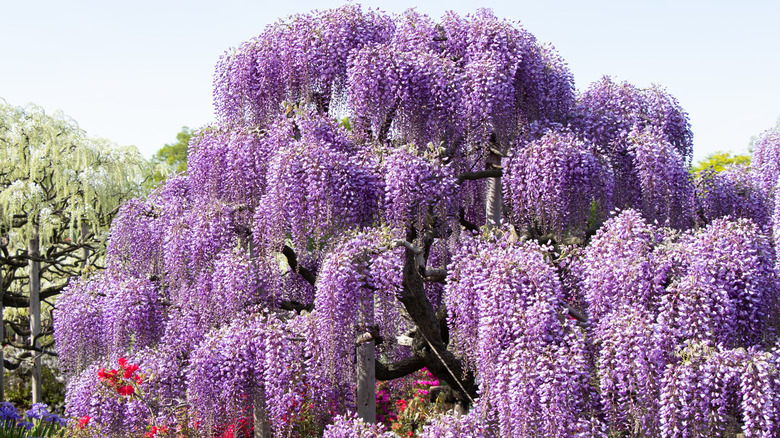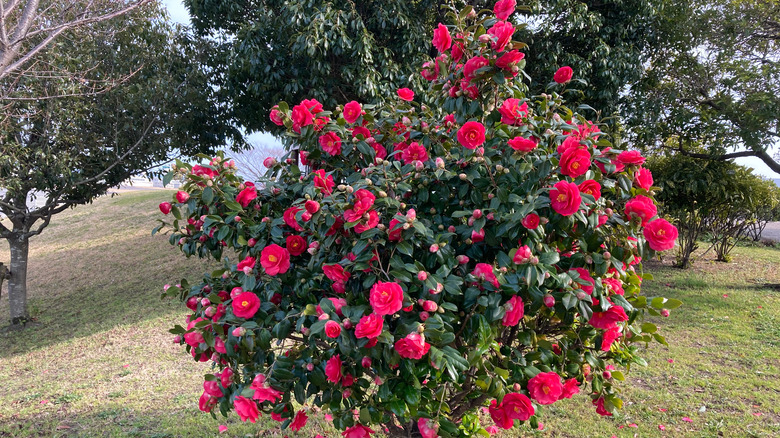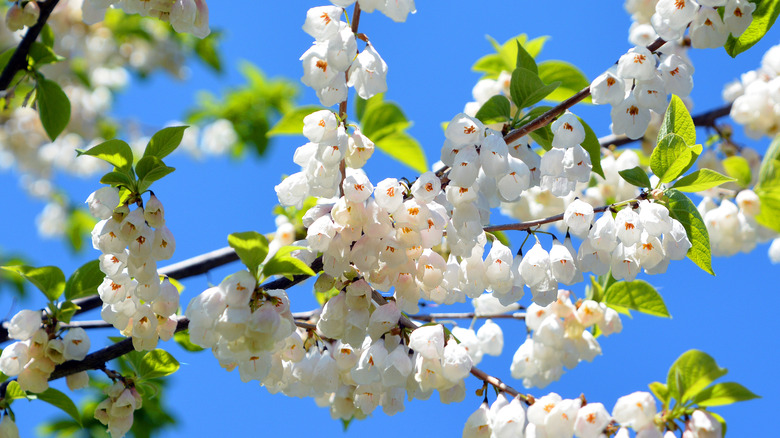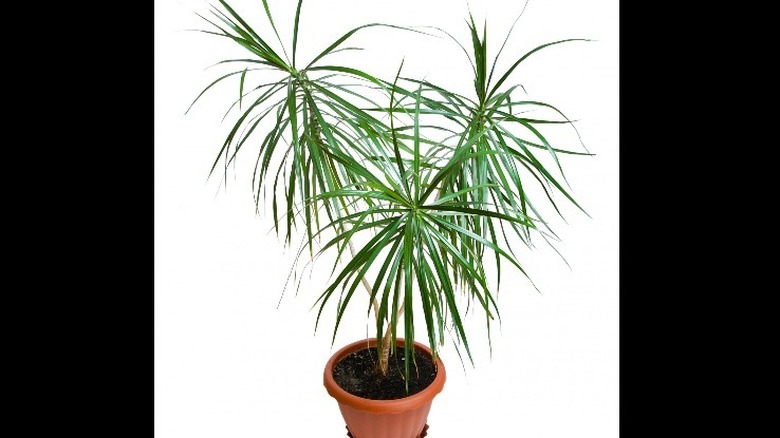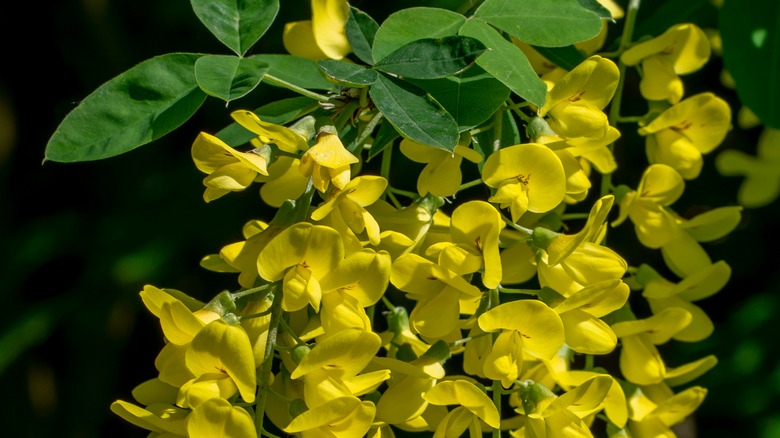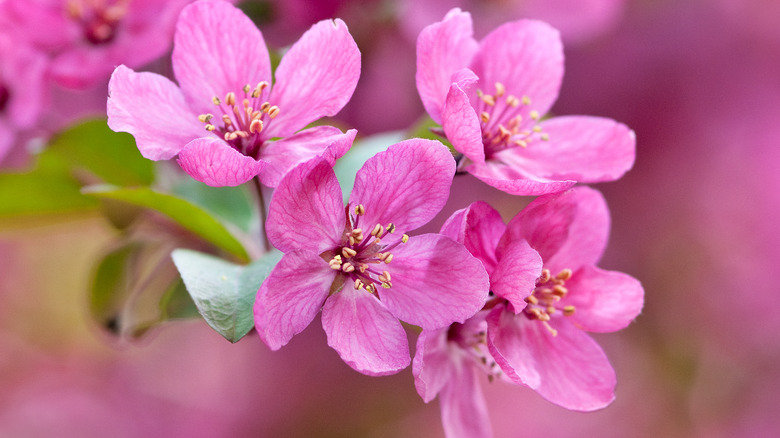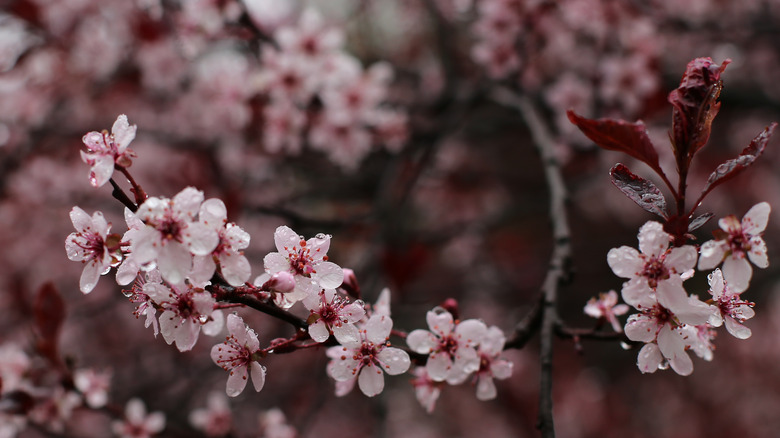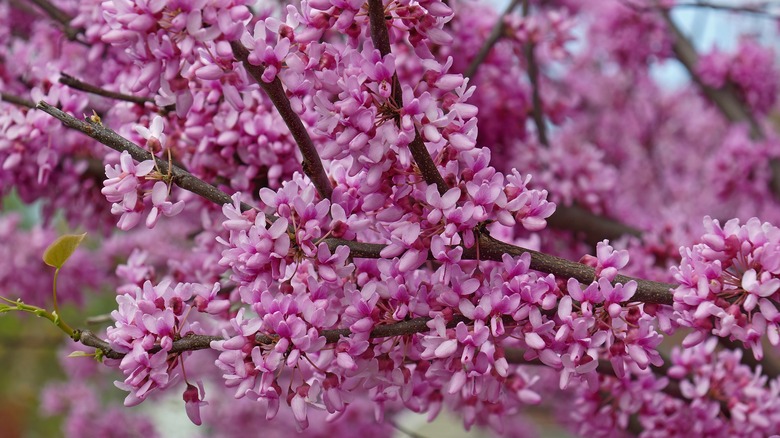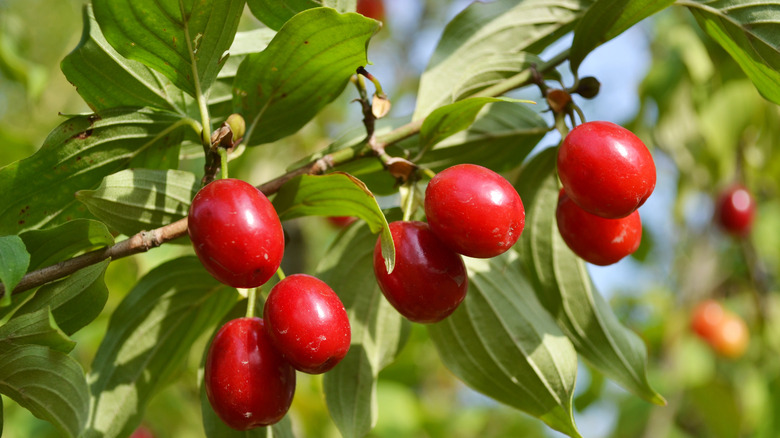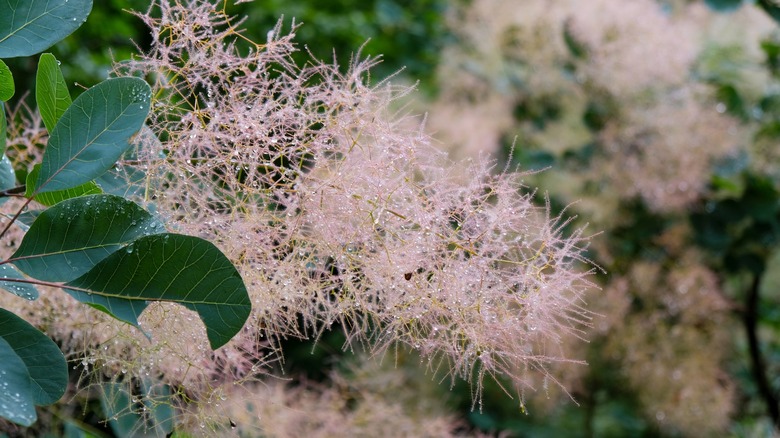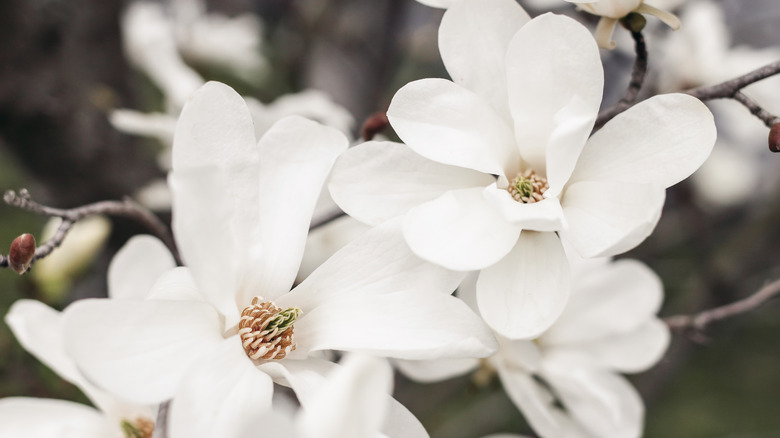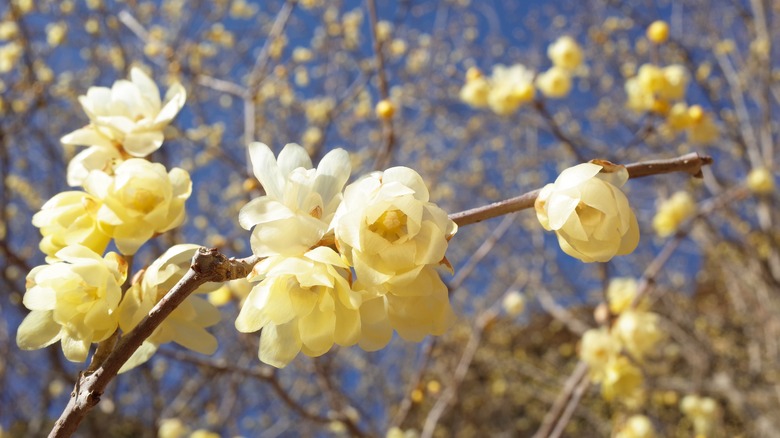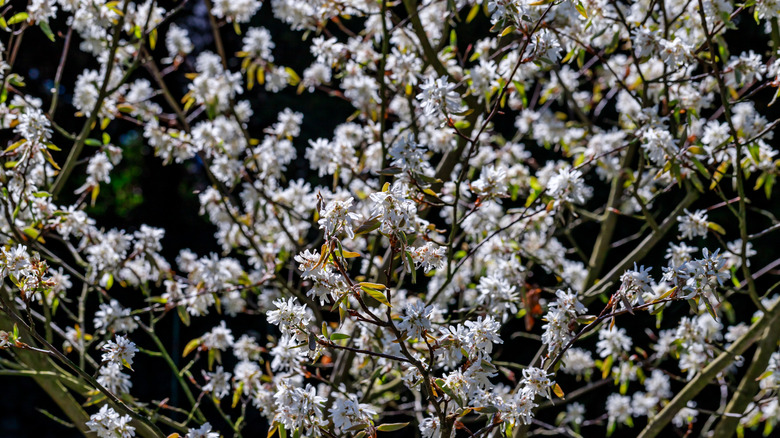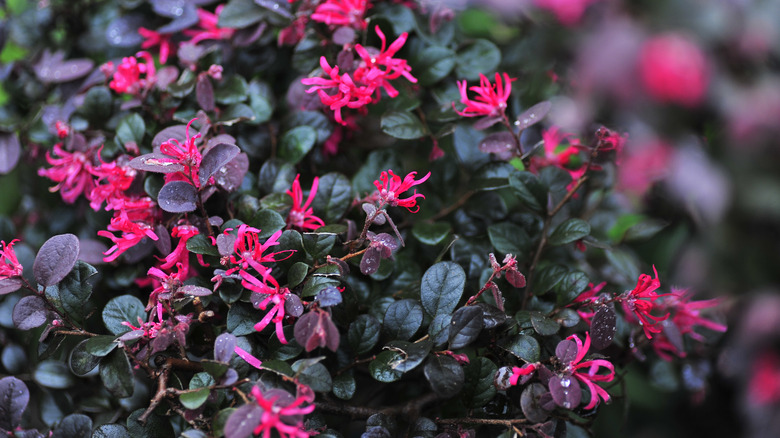15 Flowering Dwarf Trees That Bring Color To Your Yard
Flowers are to the garden like trees are to the forest, right? But what if you want trees in your garden? Many think planting trees requires a spacious environment with enough room for growth. Trees are a beautiful addition to the environment and provide the oxygen we use daily, says USDA. Sometimes, your yard may have large trees that occupy space and harbor harmful pests, and although you love them, the best thing is to remove them and look for alternatives.
When the large trees are a problem, the dwarf ones can come into play. Flowering dwarf trees are one of the most beautiful sights to behold in a garden. Not only do they earn you a bout of compliments from neighbors, but they could also serve as a hanging-out spot for kids, says Fun Littles.
With specific features and colors, your yard is about to bloom more with our compilation of dwarf trees. They may be small, but they'll surely bring a beautiful touch to your home and environment.
Crape myrtle
Crape myrtles (Lagerstroemia) are one of the most popular flowering dwarf trees in the world. They serve beautifully in the yard, porch, or entrance to your home. Although not all are classified as dwarf trees, they occupy less space and help fill the yard, according to The Tree Center. These babies are known for their resistance to diseases and low maintenance despite harsh conditions, says Orlando Sentinel.
Bloom season: mid-May, early June
USDA growing zone: 7 to 10
Growing conditions: full exposure to the sun
Soil type: acidic soil
Size: 15 inches to 25 inches tall, 6 inches to 15 inches wide
Blue Chinese wisteria tree
The blue Chinese wisteria tree (Wisteria sinensis) is a variant of wisteria trees, one of the popularly planted dwarf trees known for its dangling flowers, according to Almanac. The blue wisteria tree is more of a vining plant but still fits perfectly as an ornamental dwarf tree, says Leafy Place. A blue Chinese wisteria tree in your yard will definitely blow you away with its bluish-purple cluster flowers.
Bloom season: late spring, early summer
USDA growing zone: 5 to 9
Growing conditions: full sun to partial sun
Soil type: medium, moist soil
Size: 10 feet to 25 feet tall, 4 feet to 8 feet wide
Japanese camelia
Japanese camellia (Camelia japonica) is a dwarf tree belonging to the Theaceae family, according to NC State Extension. No doubt, you'll love its burst of pink colors in your yard. It's one of the most planted variants of camellia due to its beauty and shape, according to BackyardBoss. This dwarf tree produces peony-shaped flowers in different forms, either single, double, or semi-double.
Bloom season: winter, early spring
USDA growing zone: 6B
Growing conditions: part sun, full shade.
Soil type: well-drained, moist
Size: 6 inches to 9 inches tall, 5 inches to 8 inches wide
Carolina silverbell
Carolina silverbell (Halesia carolina) is another ornamental tree home to North Carolina and a part of the Styracaceae family, according to NC State Extension. Its name comes from the shape of the beautiful clustering white flowers that bloom during summer. Another wonder about this tree is the seed which serves as food for squirrels and falls off as they mature, says Penn State Extension.
Bloom season: late April to early May
USDA growing zone: 4 to 8
Growing conditions: full sun, part shade
Soil type: well-drained, moist
Size: 30 inches to 40 inches tall, 20 inches to 34 inches wide
Dragon tree
One would wonder why this is named after one of the deadliest animals in the world. The dragon tree (Dracaena marginata) got its name from its blood-red-looking sap, which shows after being cut, writes San Diego Zoo Wildlife Alliance. Interestingly, Ebben Nurseries claims that this sap served as a healing substance to its early discoverers. The little tree has slender green leaves with sharp red edges.
Bloom season: spring
USDA growing zone: 10B
Growing conditions: indirect sun, full shade
Soil type: loamy, well-drained
Size: 15 inches to 20 inches tall, 3 inches to 10 inches wide
Golden chain tree
Want something with a bright yellow color for your yard? Try the golden chain (Laburnum anagyroides) tree. This belongs to the Fabaceae family and is native to the European continent, according to Brittanica. Its golden-yellow flowers make it aesthetically pleasing, but beware, it's highly poisonous, according to the experts at NC State Extension.
Bloom season: late spring
USDA growing zone: 5 to 7
Growing conditions: full sun, part shade
Soil type: well-drained, moist
Size: 10 inches to 20 inches tall, 12 inches wide
Prairifire flowering crabapple
If you're looking for a tree with shades of pink and white, this Prairifire flowering crabapple is the best for your yard. According to Green Thumbs Garden, the flowering crabapple (Malus prairifire) is most beautiful during the spring season when it blooms. And it's a resilient tree — the Arbor Day Foundation claims that it adapts well to different climates and has high resistance to diseases.
Bloom season: spring
USDA growing zone: 3 to 8
Growing conditions: full exposure to the sun
Soil type: well-drained, moist
Size: 20 inches tall, 15 inches wide
Purpleleaf sand cherry
Purple leaf sand cherry (Prunus x cistena) is a flowering dwarf trees belonging to the rose family, according to Conservation Garden Park. If you're a lover of animals, this tree is a beautiful addition that attracts small birds and other mammals for food. The purple leaf sand cherry tree has reddish-purple leaves and light-pink flowers with sweet fragrances according to Arbor Day Foundation.
Bloom season: late April to early May
USDA growing zone: 2 to 8
Growing conditions: full sun, part shade
Soil type: well-drained, moist
Size: 6 inches to 10 inches tall, 5 inches to 8 inches wide
Redbud
You can kick off the bloom in your yard with the redbud tree, which we absolutely recommend. Redbud (Cercis canadensis) is a sure-fire way to add a lot of colors and beauty to your landscape. According to PlantSnap, redbuds are one of the edible trees for native Americans. MyAyan further states that redbuds are a great addition to a collection of flowers in the yard.
Bloom season: spring
USDA growing zone: 4 to 9A
Growing conditions: full exposure to the sun
Soil type: slightly acidic
Size: 20 feet to 30 feet tall, 15 feet to 35 feet wide
Red dogwood
Red dogwood (Cornus sericea) is one that got its name from its color. The red dogwood is an excellent addition to your yard and a beauty to behold during winter. The red dogwood gradually changes its color from green in summer and spring to bright red during winter, according to Laid Back Gardener. It's easy to plant as well, says Arbor Day Foundation
Bloom season: late spring to early summer
USDA growing zone: 5 to 9
Growing conditions: full sun, part shade
Soil type: acidic, moist
Size: 15 inches to 25 inches tall, 10 inches wide
Smoke tree
We hate to break it to you, but this tree doesn't actually produce smoke. According to Bellarmine University, the name comes from the smokey pink flowers the tree produces. The smoke tree (Cotinus) belongs to the family of Anacardiaceae and serves well as an ornamental tree for your garden. Martha Stewart writes that they also make excellent indoor decor.
Bloom season: late May to early June
USDA growing zone: 4 to 9
Growing conditions: full sun, part shade
Soil type: well-drained
Size: 10 inches to 15 inches tall, 12 inches wide
Star Magnolia
Looking for aesthetics in your yard, you can never go wrong with the star magnolia (Magnolia stellata). Although native to Japan, star magnolias have become an all-time favorite for Americans since their introduction in the 1860s, writes Wisconsin Horticulture. The flowers change from white to pink tinge and vice versa at different seasons, according to Master Class.
Bloom season: late February to April
USDA growing zone: 7 to 10
Growing conditions: full sun, part shade
Soil type: well-drained, acidic
Size: 15 inches to 20 inches tall, 10 inches to 15 inches wide
Wintersweet
Who says winter has to be all dry and gloomy? Not this dwarf tree. Wintersweet (Chimonanthus praecox) is a fragrant-producing dwarf tree that fits perfectly into your yard and blooms without needing high maintenance, according to Nature and Garden. They also work well to attract pollinators to your garden, and boy, would you make some bees very happy, according to Plantura.
Bloom season: winter
USDA growing zone: 7 to 9
Growing conditions: full sun, part shade
Soil type: well-drained, moist
Size: 15 feet tall, 8 feet to 12 feet wide
Downy serviceberry
The downy serviceberry (Amelanchier arborea) is another magical ornamental tree for your yard. It leaves you marveling at the products during all four seasons. The experts at Piedmont Master Gardeners state that although the tree is quite easy to maintain, it's very prone to fire accidents.
Bloom season: March to April
USDA growing zone: 4 to 9
Growing conditions: full sun, part shade
Soil type: acidic, well-drained
Size: 15 inches to 25 inches tall
Fringe tree
The fringe tree (Chionanthus virginicus) is always a good option for lovers of dogwood, cherries, and saucer magnolia. According to Direct Native Plants, this is one flower you'd love to see growing and blooming with its fragrant whitish flowers during spring and summer. Sometimes, the fringe tree is often referred to as the old man's beard or snow flower, according to Bernheim Arboretum & Research Forest.
Bloom season: May to June
USDA growing zone: 5 to 8
Growing conditions: full sun, part shade
Soil type: well-drained, moist
Size: 12 feet to 20 feet tall, 20 feet to 30 feet wide
